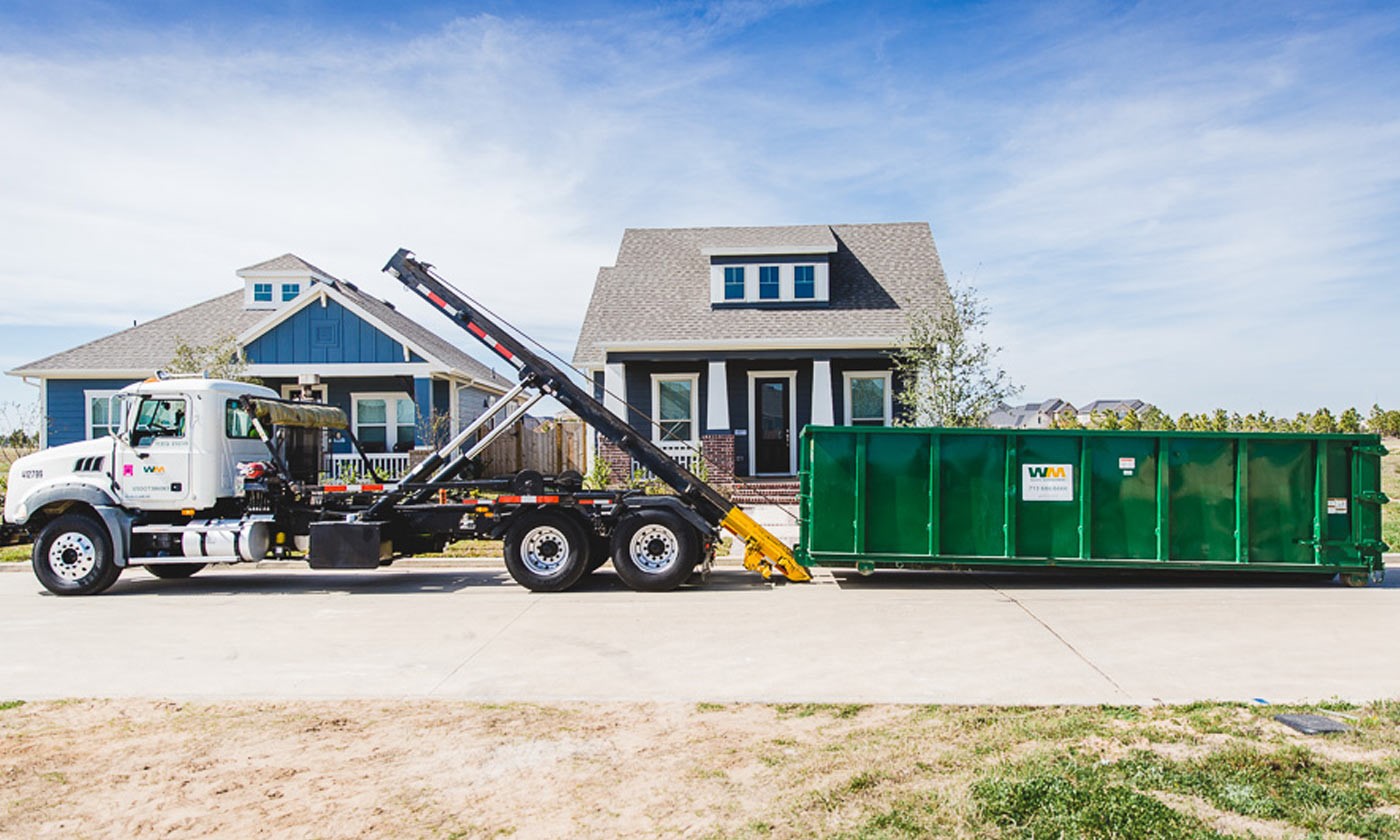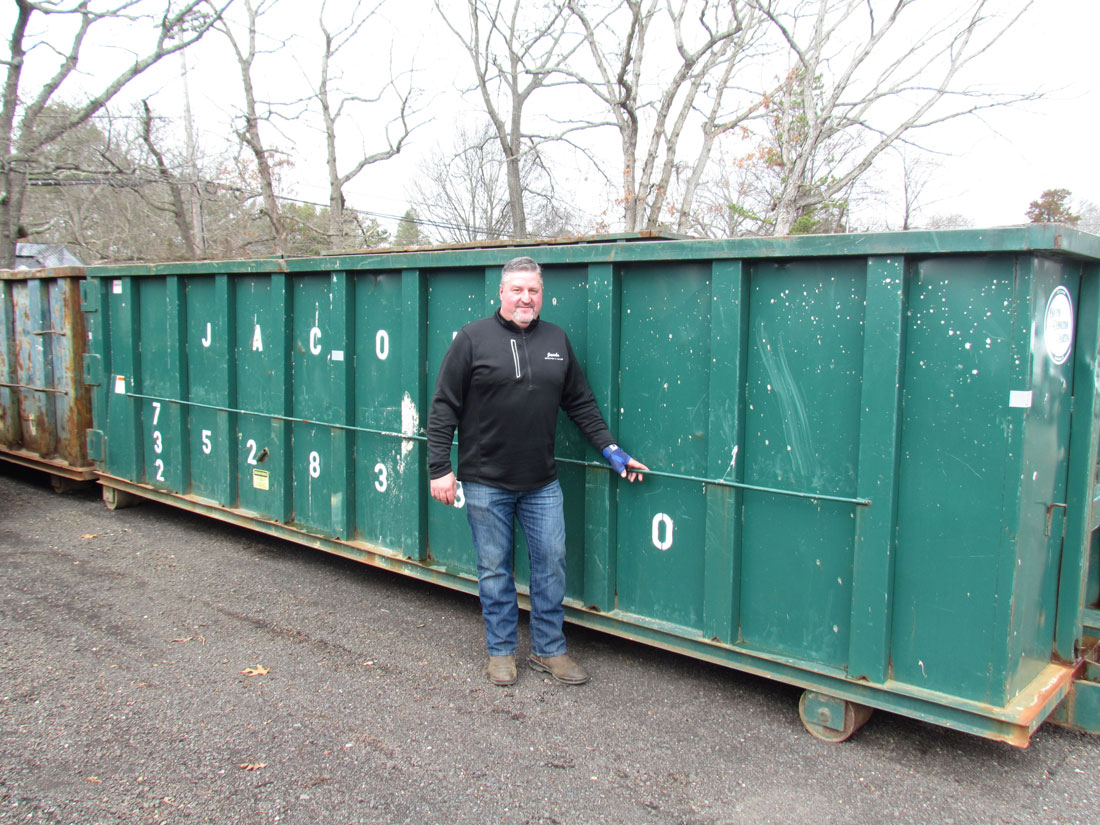Renting a dumpster involves more than just picking a dimension and service provider; it requires careful planning and consideration of job specifics, neighborhood guidelines, and logistics. Beginning by precisely approximating waste volume and inspecting local guidelines and permits Choose a reputable rental company that satisfies your task requires, and prepare for delivery and positioning. Understand what can be discarded and manage packing successfully. Schedule pick-up and removal, and prepare the website for a smooth experience. By following these actions, you'll assure a cost-effective and hassle-free dumpster rental experience. As you continue, you'll uncover better understandings to make your project a success.
Determine Task Waste Volume
Because a dumpster's capacity is a critical factor in figuring out the total expense and efficiency of a task, precisely approximating the quantity of waste generated is imperative.
Underestimating waste quantity can cause additional costs and logistical frustrations, while overstating can cause wasted resources. To obtain an exact quote, consider the type and quantity of materials being taken care of, as well as any type of regulatory requirements or restrictions.

For instance, construction tasks typically generate extra waste than clean-out projects, and particular products like hazardous waste might require unique handling.
Create a breakdown of the materials you expect to throw away, and talk to regional waste administration professionals or on the internet resources if needed.
Choose the Right Dumpster Size
With a clear understanding of the task's waste volume, choosing the proper dumpster size becomes a crucial next step. This warranties you have sufficient room to dispose of waste effectively, without paying too much for excess capacity.
Dumpster sizes usually range from 10 to 40 cubic yards, with each size wedding catering to details task needs.
For small-scale projects, such as washroom or kitchen remodels, 10-20 cubic lawn dumpsters are excellent. These compact dumpsters fit in tight rooms and can take care of moderate waste volumes.
Larger projects, like building or demolition, call for 30-40 cubic lawn dumpsters to accommodate bulkier waste materials.
It's crucial to evaluate the kind and weight of waste, as well as local regulations, when picking a dumpster size.
Select a Trustworthy Rental Company
A trustworthy rental firm is vital to an effective dumpster rental experience. It is essential to do your research study and pick a business that can give you with the best dumpster for your requirements, deliver it on schedule, and deal exceptional client service.
When choosing a rental business, think about the adhering to vital elements:
Experience and Reputation: Search for companies with a proven track record of providing reliable and reliable dumpster rental solutions. Inspect online reviews, request recommendations, and confirm their physical address and licenses.
Range of Dumpster Sizes and Types: Confirm the company offers a variety of dumpster dimensions and types to satisfy your particular needs. This can include roll-off dumpsters, compactors, or reusing containers.
Flexible Rental Periods and Pricing: Select a business that supplies versatile rental periods and affordable pricing. Make sure to inquire about any type of additional costs, such as distribution or disposal charges.
Check Neighborhood Regulations and Permits
Once you have actually chosen a reputable rental company, it's time to validate that your dumpster rental follow local regulations and permits Acquaint yourself with local regulations, zoning laws, and home owners' organization regulations to verify a smooth rental experience.
Check if you require an authorization to put the dumpster on your residential or commercial property, particularly if you stay in a residential area Some towns might require a license for extra-large or hefty containers, while others might have details laws for dumpster placement.
Research the guidelines in your location to determine if there are any kind of restrictions on dumpster size, type, or duration. Additionally, learn if there are any type of details needs for waste disposal, such as separating recyclables or hazardous materials.
Your rental business may have the ability to provide support on regional laws, but it's vital to confirm the details to avoid possible fines or penalties. By comprehending regional policies and obtaining needed authorizations, you can stay clear of unneeded inconvenience and confirm a successful dumpster rental experience.
Plan for Delivery and Placement
During the preparation stage, it is vital to coordinate logistics with your rental company to guarantee a smooth shipment and positioning procedure. This guarantees that the dumpster gets here promptly and is positioned correctly on your property.
To guarantee a smooth shipment, consider the following:
Accessibility: Ensure the shipment course is clear of obstacles, such as low-hanging branches, high-voltage line, or slim gates.
Space constraints: Determine the location where the dumpster will certainly be put to ensure it fits pleasantly, leaving sufficient area for very easy gain access to and maneuverability.
Weight distribution: Recognize a level, secure surface area that can sustain the weight of the dumpster, thinking about the weight of the particles it will hold.

Understand Dumpster Rental Periods
Most dumpster rental periods range from a couple of days to several weeks, relying on the extent and intricacy of the project. This flexibility enables you to tailor the rental duration to your specific needs, ensuring you have the dumpster for as long as needed without incurring unnecessary https://www.tumblr.com/starstruckcupcakeinternet/766174157471956992/dumpster-rentals-for-a-stress-free-experience costs.
Typically, short-term rentals are optimal for small projects, such as clearing out a solitary area or completing a minor remodelling. Longer-term rentals, on the other hand, are much better matched for larger projects, like building and construction or demolition work.
When determining the rental duration, take into consideration the rate of your project, the quantity of particles you expect to produce, and your spending plan. Keep in mind that some rental firms may provide flexible rental periods or expansions, so make sure to ask about these options when reserving your dumpster.
Know What Can Be Thrown Away
The complying with items can be gotten rid of in a dumpster:
Household trash: broken home appliances, old furnishings, and basic household waste
Construction debris: drywall, lumber, roof materials, and other building materials
Yard waste: tree branches, leaves, turf trimmings, and various other organic materials
It's important to note that particular items, such as harmful products, electronic devices, and batteries, are not allowed in dumpsters and require unique disposal.
Be certain to contact your dumpster rental supplier for particular standards on what can and can not be thrown away.
Prepare the Site for Delivery
Every dumpster rental experience begins with a crucial step: preparing the site for distribution. This essential step assures a smooth and convenient experience for both you and the dumpster rental company.
To prepare the site, begin by getting rid of the area where the dumpster will be placed. Remove any type of challenges, such as cars, furnishings, or particles, to offer a clear path for the delivery van. Confirm the surface area is level and firm, as an unequal surface can trigger the dumpster to tip over.
Next, take into consideration the dumpster's dimensions and confirm the site can suit its size. Measure the width, length, and elevation of the dumpster and compare it to the available space.
You should additionally check for any kind of overhead obstructions, such as low-hanging branches or power lines, that could hinder the delivery process.
Manage Loading and Loading
Properly taking care of the dental filling and loading of your dumpster rental is crucial to ensure a smooth and cost-effective experience.
To ensure you get one of the most out of your rental, it's necessary to adhere to some easy guidelines.
When loading your dumpster, keep in mind to:
Load heavy materials first: This protects against lighter items from getting smashed and makes it easier to arrange the contents.
Keep the dumpster tidy: Regularly tidy up particles and arrange the trash to make the most of area and prevent overloading.
Avoid overfilling: Leave adequate space on top to avoid spills during transportation and see to it the dumpster can be securely lifted.
Schedule Pickup and Removal
With your dumpster rental totally loaded, interest transforms to scheduling pick-up and removal This essential action assures a seamless experience and prevents any potential hold-ups or fines.

To initiate the pick-up procedure, contact your dumpster rental company and give them with your rental details, consisting of the dumpster's location and the desired pick-up date.
Be certain to set up the pick-up at once that works best for you, considering any local guidelines or restrictions that may affect the removal process.
It's vital to enable adequate time for the pick-up and elimination process, as it might take a few days to complete.
Additionally, make certain that the dumpster is easily accessible and devoid of any type of blockages, making it much easier for the elimination group to collect the dumpster efficiently.